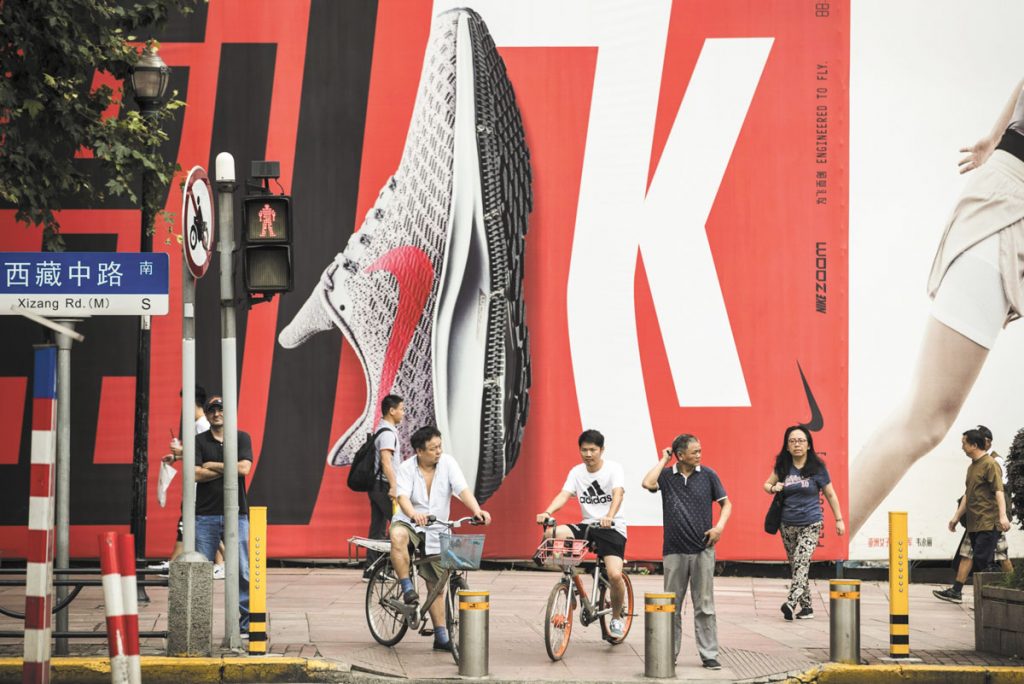Subscriber Benefit
As a subscriber you can listen to articles at work, in the car, or while you work out. Subscribe NowDown the street from Mumbai’s grand colonial-era Royal Opera House, Deepak Gurnaney sits in his small electronics shop in front of rows of flat-screen TVs flashing Hindi soap operas, while his four staff play with their phones. There are no customers.
The 68-year-old used to need a machine to count the cash brought in by the business his father founded, and a warehouse nearby to keep enough stock. With business down 25% the past two years, he’s gotten rid of both.
“The car market is down, this market is down, that market is down, so people see that and think they should not spend,” he says. “Retail trade being the way it is, I cannot encourage anyone in my family to join this business. I will be the last generation.”
Nearly 3,000 miles away, in the fluorescent-lighted sprawl of Beijing’s Zhongguancun Kemao electronics mall, He Hongyuan is singing a similar tune.
“These days, consumers tend to be more careful with their spending,” He says from behind the counter of a glass booth, one of hundreds in the mall selling phones, laptops and other gadgets. “In the past, people changed phones as soon as the new model came out. Now, they change their phones according to their need.”
Gurnaney and He are emblematic of the deepening retail gloom in India and China, home to 2.8 billion people—or more than a third of the world’s consumers. Makers of everything from hair oils to motorcycles had pinned their hopes for growth on one or both of these emerging giants, and the effects of the double slowdown are rippling out across the world.
“They’ll probably remain the largest and most promising consumer markets out there, but this slowdown is still a headwind for a global economy that is already struggling,” said Frederic Neumann, co-head of Asian economics research at HSBC Holdings in Hong Kong.
China indicated growth this year could be as low as 6%, the slowest on record, while India’s expansion was the weakest in six years in the June quarter. China’s sales of sedans, sport utility vehicles, minivans and multipurpose vehicles fell for the 14th time in 15 months in August, the same month India’s car sales had their biggest annual decline on record.
Even though their growth rates are still higher than those of most countries, the slowdown is critical for the two developing nations. China needs to keep up expansion to deal with a pile of debt amassed during its boom years. And youthful India is relying on a robust economy to absorb millions of new job seekers each month.
“The old drivers of growth are really running out of steam,” said Julian Evans-Pritchard, Singapore-based economist for Capital Economics. He said younger consumers in China are more wary of spending on luxury goods and cars than were their parents. “I think they’re going to have to get used to incomes growing at a much slower pace.”
In India, the government announced corporate tax cuts worth $20 billion last month to cushion the slowdown. But with a financial system choked by soured loans and unemployment at a 45-year high, the mood of pessimism is still hurting sales of companies from jeweler Titan Co. Ltd to deodorant maker Hindustan Unilever Ltd.
India is already the second-biggest market after the United States for consumer goods giant Unilever. China is the biggest market outside the United States for Starbucks and Apple, while hotel chain Marriott International has 300 new hotels planned for the country. Nike Inc. has posted 20 straight quarters of double-digit sales growth in China.
But in the consumer arena, bad news begets bad news. The U.S.-China trade war, clampdowns on corruption in India and China, and factory closures are making people more worried about the future.•
Please enable JavaScript to view this content.

